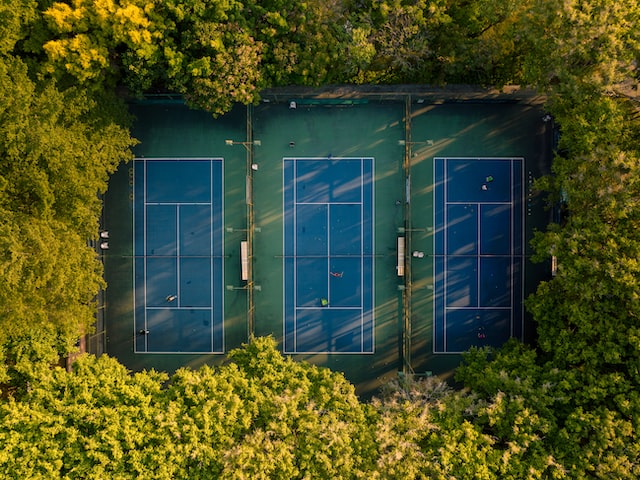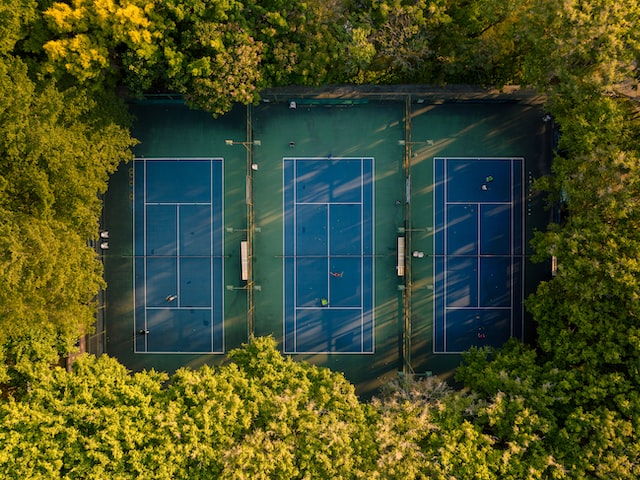Introduction
Have you ever wondered how weather conditions can impact your golf performance? From rain and wind to sunshine, different weather conditions can have a significant influence on your swing, accuracy, and overall golf experience. In this article, we will explore the effects of different weather conditions on club performance and shed some light on how you can optimize your game when facing challenging weather situations.

Image Credit: Unsplash.com
The Impact of Rain on Club Performance
Rainy weather can pose several challenges for golfers, including wet fairways and greens, reduced club grip, and altered ball flight. The wet conditions can affect the distance and accuracy of your shots, making it crucial to adapt your game accordingly.
One major impact of rain is the reduced grip on the club. When the golf club handle gets wet, it becomes more slippery, resulting in reduced control over your swing. To counter this, many golfers opt for specialized rain gloves or grips designed to maintain grip even in wet conditions. These accessories can help you maintain control over your shots and prevent unintentional club rotation during swings.
Another consideration is the impact of rain on ball flight. Raindrops can reduce the height and distance of your shots, as they can cause the ball to slide off the clubface rather than gaining maximum spin for lift. It is essential to adjust your club selection to compensate for this reduced distance and trajectory. Choosing a slightly more powerful club or adjusting your swing to generate additional power can help you offset the effects of rain on your shots.
The Influence of Wind on Club Performance
Wind is a common element on golf courses, and depending on its speed and direction, it can significantly impact club performance. Playing against strong headwinds can make it challenging to achieve desired distances, while playing with a tailwind can result in unexpectedly long shots.
When facing a headwind, it is advisable to select a club with slightly more loft to help the ball cut through the wind more efficiently. Additionally, you may need to adjust your swing, aiming for a lower ball flight to minimize the influence of the wind on your shots. Conversely, when playing with a tailwind, you may opt for a more powerful club to take advantage of the extra boost provided by the wind.
Crosswinds can also pose challenges, especially when playing on open fairways or links-style courses. Sideways gusts can affect the path and direction of your shots, often leading to unintended results. In such situations, experienced golfers may adjust their aim and swing to compensate for the wind’s influence, ensuring that the ball lands closer to the desired target.
The Role of Sunlight in Club Performance
Sunny weather not only affects your mood on the golf course but can also impact your club performance. The most significant impact of sunlight is the potential glare that can affect your concentration, visual perception, and alignment. When facing bright sunlight, consider wearing sunglasses with polarized lenses to reduce glare and ensure clear visibility.
Moreover, sunlight can also affect the temperature of the golf club. Heat absorbed by the clubhead during sunny weather can cause the metal to expand, potentially leading to minor changes in the club’s loft and lie angles. It is advisable to allow the clubs to adjust to the ambient temperature before making any significant adjustments to your swing.
Conclusion
Weather conditions play a crucial role in determining club performance during a game of golf. Rain, wind, and sunlight can all impact various aspects of your game, affecting your accuracy, distance, and overall experience. By understanding these effects and making necessary adjustments, you can optimize your performance and adapt to challenging weather conditions.

Image Credit: Unsplash.com
Remember, rain requires a strong grip and adjustments in club selection, wind demands careful consideration of club choice and adaptability of your swing, while sunlight necessitates the use of sunglasses and awareness of glare. By being aware of these factors and taking the necessary precautions, you can maintain consistency and improve your overall golf performance, regardless of the weather conditions.
So the next time you find yourself on the golf course with rain pouring, wind blowing, or the sun shining brightly, equip yourself with the knowledge and tips mentioned in this article to tackle the weather challenges. Don’t let the weather dampen your spirits or negatively impact your game. Embrace the elements, make the necessary adjustments, and enjoy the unique experience each weather condition brings to your game.
Now, pick up your clubs, head to the course, and let the weather conditions be an exciting challenge that pushes you to improve your golf skills!
Symbolbilder von Unsplash.com
